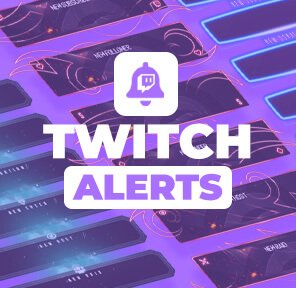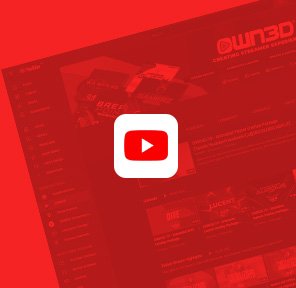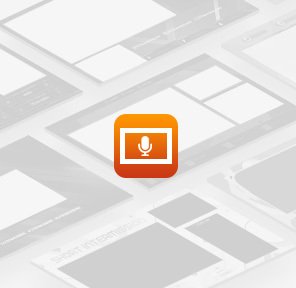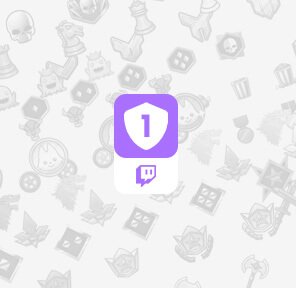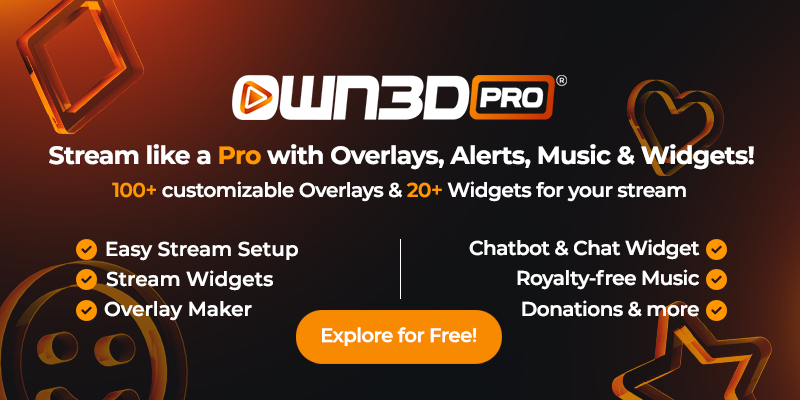1 Introduction
If you want to start streaming and you still don't know which program you should use, one of the easiest softwares to install and start is XSplit Broadcaster. This software stands out for its robustness, ease of use and will allows you to stream, within minutes, on nearly every streaming platform. XSplit Broadcaster is only compatible with Windows and it is a great option for live streaming on Twitch, Facebook and YouTube.
2 How to install XSplit Broadcaster
To use XSplit Broadcaster the first thing you have to do is download the software from the official website: https://www.xsplit.com
Once inside, click on the blue "Download Broadcaster" button and, within a few seconds, the download will automatically start. If the download doesn't start, you can download it directly from here.

Once in your computer, double click on the .exe file, that you’ve just downloaded, and start the installation.

As soon as you open it, it will start downloading. You only have to wait until it takes you to the classic installation process.

Once you get to this screen, you will start the installation by clicking "Next".

Then you have to choose the folder where the program should be installed. And then click "Next".

After choosing the installation folder, you can start the installation by clicking on the "Install" button.

When the installation is finished, you can close the installation and start the program by clicking on "Finish".

What operating systems are compatible with XSplit Broadcaster?
You can install XSplit Broadcaster on your Windows PC. It is compatible from Windows 7 x64 or higher.
MAC OS or Linux are unfortunately not compatible with the streaming software.
The very first time when you open the software, XSplit Broadcaster invites you to choose an account which you want to connect to it. You can choose to use and create an XSplit account, your Twitch account, Facebook or YouTube, among others.

For this guide, we are going to choose Twitch, since it is the streaming platform par excellence and also allows us to use animated overlays, panels and banners.
Once you have clicked on the service you like, in our case Twitch, a new window will open in the browser. Here you will have to "Authorize" XSplit Broadcaster to get information about our channel and interact with it. Just click on the purple "Authorize" button at the bottom of the page.

After giving it access to your Twitch data, XSplit will send you to another window to accept an agreement by clicking the blue "Continue" button.
Optional: At the bottom of this screen, it will allow you to link your Twitch account, with your XSplit account, by clicking the blue "Here" button.

When you accept the message, XSplit Broadcaster will launch and you will see a window where you can choose whether you want to upgrade your account for $4.99 per month or continue with the free account.
The Premium version of XSplit allows you, among other things, to use the Virtual Camera, access to 24/7 Premium support, unlimited scenes and preview your changes before they go live.

After choosing the mode you want to use, you will go directly to the Control Panel, or main screen of XSplit Broadcaster. Next, we will explain in detail the most interesting menus and options to start your stream.
3 XSplit Broadcaster – Overview
The first time you launch XSplit, the application will ask you for what you are going to use it. Depending on your choice you will get helpful tips to setup XSplit for your needs. We are going to choose PC Gaming, as this will help us to explain some of the parts of the interface a little better.
On the left, you can also see a link to the user manual and you are invited to watch several tutorials on YouTube.

When you choose any of the options, XSplit will automatically create several test scenes and add some elements such as a webcam, a camera overlay, texts and a game capture source.

At the top you can find a few menus which we will explain in the follow a little deeper:
File – In this section you can create new scenes, load old ones, duplicate them, access your recordings and close the program.

Broadcast – Here you can choose where you want to stream, in our case Twitch. When you click on Twitch, you will have to enter your credentials and give it access to your account.

Record – In this menu you will be able to configure all the details of the recording, from which scene you want to record to which video and audio encoder you want to use. You will also able to determine the quality together with its quality and the output format.

Playout – With this option you can stream your video over the network to another device compatible with NDI technology.
Extensions – Extensions are a key part of XSplit. From here you can configure the audio mixer, separate the audio for each scene, configure presentations, scene changes and create transitions. In addition, you can add and remove other installed extensions.

Tools – In the tools menu you will find the program's options, along with the options for sharing the stream, the plugin store, audio effects and permissions.

Help – Do you need any help? This is your place. You will find video tutorials, user manual, updates, patch notes; you can also change the software language from here, and even chat with the support.

Upgrade – This blue button allows you to upgrade your free account to premium for a monthly payment of $4.99.
Stream y Record - In addition, at the top you will also find the two most important buttons of the program: Stream and Record, and even one for capturing.

On the other hand, in the lower part of the application, you find the scene panels, the controls to activate and deactivate the microphone and speakers, the transitions configurator, and everything you need, to add sources to your scenes.

4 Basic streaming configuration for XSplit Broadcaster
Next, we will teach you how to configure XSplit Broadcaster to start streaming as soon as possible, with no extras, simply open it, configure the essentials and start streaming.
4.1 Configure the resolution and add sources
First of all, you are going to create a new scene. To do this, go to "File" at the top left, and click on "New presentation".

Next, you are gonna choose the resolution and the FPS at which you are going to stream. Go to the top right, and click on the small white arrow.


Note:
The ideal resolution and frame rate for streaming depends on the power of your PC. In our case, we have chosen 1920x1080 at 60FPS, but the default setting is 1280x720 at 30FPS. We advise you to try various settings, such as 1080p at 30FPS, if your computer's performance is not ideal.
Now, you have to create a new source to capture your screen. Go to the bottom left, "Add Source" button and choose what you want to share.
If it is a game, start the game, Add Source -> Game Capture. In our example, we have opened the game "Path of Exile" and as you can see, it already appears in the list. This will create a window where you can see the game in your XSplit Broadcaster.


Afterwards, the window of your game will appear in small size and you will be able, from a corner, to adjust it so that it occupies the whole screen.

If you want to share your screen, you have to click on Add Source -> Screen Capture - and choose which monitor you want to capture. If you don't want to choose the whole monitor, and you only want a specific window, Add Source -> Window Capture - and choose the window you want from the list.

For this example, we are choosing to share our Edge browser window, something very useful if you want that your viewers watch a YouTube video with you.


As is the case with streaming a game, you can enlarge the window to fill the entire surface so that your viewers can see everything clearly.

Now that you know how to display your game or screen, how about if we have a webcam and we want to be displayed? Simply add a new source, Add Source -> Devices -> Video - and select your webcam. Very easy! In our case, I have chosen the Logitech HD Pro Webcam C920.

Once selected, you can place your webcam wherever you want. But in the list below, it is very important that your webcam is above the screen or the game you are sharing.

4.2 Connect your Twitch account to XSplit Broadcaster and start your stream
Once you have on screen what you want to broadcast, it's time to stream it to your Twitch channel. How can you do it? It is very simple!
The first thing is to make sure that your sources are ready and you are ready to start your live stream. Once this verification is made, you must press the blue button, called "Stream", which you can locate at the top in the middle.

When you click on it for the very first time, a window will appear asking you in which platform you want to start the stream. In our case, we select Twitch.

Next, you have to authorize XSplit Broadcaster to use your Twitch account. Click on "Authorize XSplit to use Twitch" and choose your account.

Once picked, simply click "Next" so that the system chooses the best Twitch server, in our case Spain, Madrid, and click "Finish".

Finally, a screen appears for setting the video codec, the bitrate, and the audio encoding. To start streaming, click OK and you will be asked for your Stream Key.

To obtain your Stream Key, you have to access www.twitch.tv and click on your profile picture. Choose "Settings", "Channel and videos" tab, and right at the top you will find your Stream Key. You must copy and paste it into XSplit Broadcaster, to the right of where your username appears.


Important:
The free account won't allow you to change the audio quality, but you will be able to use the NVENC codec (in case you use an Nvidia graphics card). Another difference between the free account and the premium version is that, if you want to stream at 1080p 60FPS, the program will add a watermark. To avoid the watermark, you must choose 1280x720 at 30FPS.

Once it is ready, you only have to click the blue "Stream" button again and, if everything is OK, it will change its color to red and let you know that you are already streaming!

5 Adding & adjusting overlays, alerts and transitions
Now that you know how to stream, it's time to start streaming like a pro. Some basic and common elements used by all professional streamers are overlays, alerts and transitions. Many of them do not have time or desire to learn how to design these materials or images, and therefore, they rely on services like OWN3D. In OWN3D we have a wide variety of Overlays, Alerts and Transitions ready to be introduced in your stream.
5.1 Add and customize your overlay
If you want to add a more professional look to your stream, as we have already mentioned, the best thing to do is to add an overlay. In XSplit you can add either a static overlay or an animated overlay.
The first thing to do is to unzip the package, if you have purchased one of our overlays, or locate the folder where the image of your overlay is.
Then, go to XSplit Broadcaster and click on Add Source -> Media File.

As soon as you click on it, a window pops up and you can select the desired image or overlay. If the overlay is static, your file will have a .jpg, .psd or .png extension. If it is an animated overlay from our store, the format will be .webm.
Important:
It is important that the images have a resolution of 1920x1080, so that they fit perfectly to the resolution at which you want to stream.

Once selected, click "Open" and the overlay will be added to XSplit, where you can adjust its size and place it wherever you want.

If you have added an animated overlay, it is important to right-click on the overlay, and set a couple of options. The first one is to choose "Play -> Forever" and the second one, "When Finished -> Rewind". This will make the animated effects of your overlay keep playing every few seconds.

In a similar way, you can also add a webcam overlay. You will simply have to repeat the previous operation, but selecting the camera overlay. If you did it right, the result will be something like this:

Note: In XSplit Broadcaster you can have up to 4 scenes with the free account. Think about having one scene for the beginning of the stream, one for Just Chatting, one for Gaming and one for ending, each with a different overlay!
5.2 Adding & customizing stinger transitions
When you have two or more scenes, you want to spice things up by switching from one to the other. That's why transitions were invented.

In order to add your stinger transition, you must go to the bottom right, where it says "Transition" and click on the list of transitions. Here you will find several predefined transitions. To add our stinger Transition, go to "Stinger Transition -> Add Transition...".

In the following dialog box, click on the three ellipses "..." and browse for your transition file. It can be a .png, .webm, .avi or .mov, almost any type of video file will work.

Then, click on "Accept" and it will appear in the "Stinger Transitions" list, where you can select it and it will appear every time you switch to a different scene.
5.3 How to add alerts to XSplit Broadcast
All the big Twitch channels use alerts to show their followers donations, latest subscribers or followers, or to signal incoming raids and hosts. To add alerts to XSplit Broadcast you will need to use a third-party site such as streamlabs.com. Streamlabs is our preferred site for setting up alerts and you can access it using your Twitch account.
5.3.1 How to configure Streamlabs alerts
Once inside, and logged in to your Twitch account, you have to go to the Streamlabs control panel, click on Widgets->Alertbox. There you will find all the options to configure your alerts.
5.3.2 Streamlabs - Widget URL
In order to add an alert to XSplit, we need the URL of the Streamlabs Widget. In Widgets -> Alertbox you will find the URL that you should copy and then paste into XSplit Broadcast. It is important not to share this address with anyone.

5.3.3 General Settings
Under the General Settings you can modify some of the default values, such as the image position, the alert text or the font color, and even set delays.
5.3.4 Followers, donations, subscribers
The remaining tabs are reserved for more detailed options for each of the alerts. You can enable or disable each alert individually, override the default options and add a custom message to each alert. You will be able to do it very easily, like this:
• {name}: It will be changing with the name of the donors, followers, etc.…
• {amount}: The amount of money or bits donated.
Here you can also add an image, sound or animation to the alert. If you have purchased one of our complete overlay packages or one of our animated alerts from OWN3D.TV, in each section you will be able to enter the Webm file indicated. You can configure an alert for subscribers, another for donations, raids, host, followers... Our packages include an alert for each situation.

Important:
After changing the alerts, you must always click on Save Settings first, or the changes made will not be saved.
5.3.5 Add Streamlabs alerts to XSplit Broadcast
Once all the alerts are configured in Streamlabs, it is very easy to add them into XSplit. To achieve this, copy the URL from Streamlabs widget and paste it in the XSplit source, in Add Source -> Webpage... as shown in the image below:


And that's it! Now you only have to place your alerts above all the sources of your scene and place them in the place of the screen that you want. To do this, you select them in the source list and, using the arrows at the bottom right, or dragging, to put them in the first place.

6 Xsplit vs OBS
OBS and XSplit are very similar. Both have free and paid accounts, similar performance, since both programs can use Nvidia's NVENC encoder, dozens of plugins to improve your stream and, in the case of XSplit, a plugin that will allow us to import our scenes already created in OBS.
For a new streamer, XSplit is probably an easier solution to use. Its interface, even being very similar to the one you found in OBS, is more modern and easier to use.
In XSplit, you should highlight how clear its settings are. From them, you can perform a lot of actions, such as configuring hotkeys, adjusting your audio or auto-scheduling messages on social networks every time you start a stream. The latter is a very important part for new streamers and XSplit manages it perfectly. In addition, XSplit has its own software to edit clips.
Of course, in both programs we will have to configure the alerts using third party sites. Both XSplit and OBS Studio are compatible with Streamlabs and streamelemnts. However, adding our new animated alerts will be an easy task.
One of the battles that XSplit has lost versus OBS Studio, is in the compatibility with operating systems. If you use MAC OS or Linux, you will not be able to use XSplit Broadcaster and you will have to use OBS Studio or another broadcasting software.
In addition, we must point out that the free XSplit account does not allow us to preview the changes in real time, create several scenes or add a small delays to avoid Stream Sniping, something that you can do with OBS Studio.
7 Conclusion
XSplit Broadcast is a very powerful yet robust tool for streaming. It has many different options and is compatible for streaming on Twitch, Facebook or YouTube. In addition, XSplit allows you both, stream and record your games and then edit and upload clips to YouTube or social networks.
Again, we emphasize its ease of use, its multitude of plugins and how little it fails. It is a very robust program that hardly gives errors and allows you to perform a lot of options.
Of course, there is still no version for those users who use MAC OS and Linux. And users of the free account may miss some features that Premium account users have, such as creating multiple scenes, adding delay to the live or previewing changes in real time. But if you don't need any of the above features, XSplit Broadcast is a program to consider.








